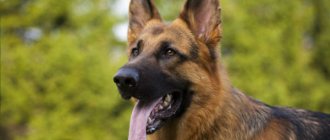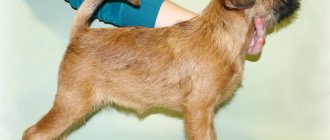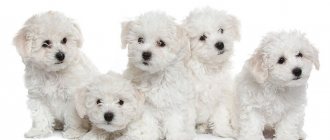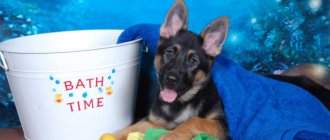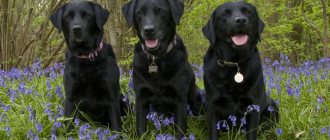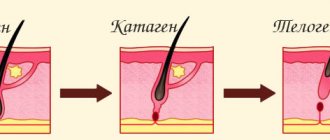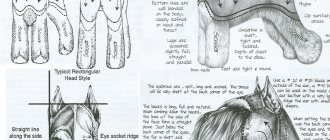Havana Brown is a unique cat breed that is now considered rare. In the ranking of endangered felines, they occupy the first position. But as pets, they are ideal. They are liked not only by their non-standard appearance, but also by their intelligence, friendliness and other character traits. They are also called oriental cats because of their resemblance to these animals. They will be discussed in the article.
Havana brown
Origin
These representatives come from England. Their ancestors are Siamese with a uniform brown coat color. Only they lost popularity after the approval of the standard, according to which the color should be colorpoint.
Havanas first appeared in America before their official recognition - in the 50s. last century. Then the development of the breed proceeded ambiguously in different countries. The British continued to crossbreed Havanas with Siamese for some time, trying to improve the animals. But the Americans strictly controlled the selection, preventing the entry of foreign blood. Therefore, at first, the Havanas from England and America were clearly different.
Baroness Miranda von Ullmann was actively breeding the breed. She crossed black short-haired representatives with Siamese individuals. As a result of nine years of tireless work, success was achieved. In 1959, the breed was registered under the name “brown shorthair” and was first presented at an exhibition show.
Then they began to make attempts to crossbreed with colored orientals. This was a necessary measure, since there were few harbors and thus they sought to increase them. The result was cats of a different breed – oriental.
History of the breed
The Havana cat was bred through selective breeding, the ancestor is an oriental breed. Representatives of the Havanese breed are not associated with the capital of Cuba, but appeared in the UK. In the 19th century, the graceful animals with brown fur were brought to England from the Kingdom of Siam.
Unusual cats made a splash at exhibitions, won a cat competition in 1888, and became popular pets among middle- and high-income Englishmen. But gradually the brown oriental gave way in popularity to its relative - the Siamese cat. During World War II, Havana practically disappeared.
After the war, the British began to restore the breed and organized The Havana Group. Since the number of individuals was minimal, we had to use a black European shorthair cat for breeding.
American felinologists joined the work to restore Havana. Some of the offspring were brought to the USA. During further breeding, the Americans did not mix in third-party breeds, and as a result, in 1958, the American exterior was recognized as purebred.
Standards and appearance
The breed has a CFA approved standard. According to the system of this organization, cats taking part in exhibition shows are assigned a specific title. It is determined depending on a number of factors: age, color and other physical parameters of the competitor. On the basis of which the owner is issued an appropriate certificate.
Breed standard
Description of the breed, according to the international classification:
| Body parts | a brief description of |
| Limbs | Slender, rather long, muscular. The hind ones are slightly longer than the front ones. They are more graceful in cats than in cats. |
| Tail | Medium length, gradually tapering towards the tip. |
| Head | Oblong-elongated, with a clearly defined chin of square outline. The muzzle is narrowed. In adult males, the cheekbones and cheeks are very prominent. A slight bend is noticeable along the line of the nose and forehead. The surprising thing is that the mustache is chocolate or lilac in tone (combining with the color of the coat). |
| Ears | Large ones, located far from each other. Slightly tilted forward. Therefore, it seems that the cat is in a wary state. The inside of the shells is filled with soft fluff. |
| Nose | It has a brownish-pink pad. Its line runs almost at right angles to the chin. |
| Eyes | Almond-shaped, small in size. The color allowed by the standard is all shades of green. |
| Frame | Tight and dense, with well-developed muscles. Cats are usually bigger than cats. |
| Wool | Soft and silky to the touch. Hair length – short or medium. Has a uniform color. |
Dimensions and weight
Sexually mature Havanas weigh about 6-7 kg. The cat's build is an order of magnitude larger than females by 3-4 kg. Despite their apparent lightness, the animals are quite dense and muscular in build.
Anatomical characteristics
Representatives of the breed are distinguished by incredible grace. They have a firm tread, but the animals cannot be called small. Outwardly, cats charm, especially with their expressive emerald eyes. And the coat shimmers in the sun.
One of the characteristics of the breed is a wedge-shaped muzzle with a blunt chin. Because of this, she is associated with the cob of corn. These are the only representatives of cats whose whiskers match the color of their coat.
Features of color
Cats have a characteristic rich brown coat (which is why the name of the breed contains the prefix “brown”). There are different shades. The tone of the cover is uniform and shines when exposed to sunlight. A purple color with a grayish inclusion is acceptable.
Kittens often have a subtle tabby pattern. As the kids grow up, it disappears.
However, the standard also provides for a number of other colors:
- chocolate (Havana);
- light brown (cinnamon);
- brindle;
- blue;
- beige (faun);
- red;
- black;
- marble;
- ticked;
- snow-white (rare);
- tabby
Description of standard appearance and color options
This cat breed is very graceful. The head is wedge-shaped with a strongly developed chin and a well-defined transition from the forehead to the nose. The eyes are almond-shaped and green. This is the only cat breed that has an officially registered rare whisker color, which can have different shades. In cats with lilac hair it is lilac with a gray tint; on chocolate shades it is brown.
Despite its external grace, the Havana is a rather large cat and weighs at least 4-6 kg. The coat is short, dense and shiny with a minimal amount of undercoat. The color of the whiskers is in harmony with the main color of the coat. Kittens may have a residual tabby color, which disappears by the first year of life.
Today there are three varieties of Havana:
- American;
- British;
- non-English.
The last species is the youngest. It was bred in the 70s of the last century and registered in 1984. The most common type of breed today is considered to be the non-English Havana.
Character
Affectionate and gentle creatures
Cats of this breed are characterized by increased playfulness and curiosity. They become strongly attached to people and need constant attention and care from them. Communication with the owner and members of his family is a vital need for them. Havanas quickly adapt to any conditions and situations. They get along without problems with other pets in the house and even “grumpy” dogs.
Non-standard behavior is manifested in everything. Due to its excessive curiosity and activity, be prepared that your pet will try to take part in all household chores. All hidden corners will definitely be explored. Havana can be found in the most unexpected places - in the laundry box, pantry or in a bag brought from the store. At the same time, the animal does not particularly impose itself, because it is a self-sufficient person.
Due to their natural intelligence and nobility, Havanas behave in an appropriate manner. These cats will never mess up or mark their territory. On the contrary, they prefer cleanliness and order: they eat and go to the toilet in strictly designated places. So there will be no problems with litter training.
One of the features is a love of heights. They constantly climb to higher places and spend a long time watching what is happening around them. Also, they are able to sit on the windowsill for hours and watch the movement outside.
Havanas are good-natured and affectionate by nature. They show their love more strongly to the owner, they can even stroke him with their paw. By the way, they release their claws only when necessary. So, in order to better examine any find, they grab it with their claws, bring it to their muzzle and smell it. But, they are overly touchy, which is worth remembering. They will not immediately show that they are offended and will demonstratively act indifferent. But they remember the insult and suffer inside.
Socialization of a pet
Along with predatory habits comes irrepressible activity. The cat does not know how to sit still and does not like to sit still. Her life is movement. And the faster it is, the more comfortable it is. She is inventive and clever in games. Loves to play with children. When playing, she is careful and not malicious. He does not use claws on children, and in case of danger, he is prudently removed.
A cat needs a companion, so it is better to get a breed for those who are often at home. It is not recommended to leave Havana alone. Having lost her friends, she falls into deep despondency, loses her appetite and the meaning of her existence.
It is not recommended to leave Havana alone
If the owner is forced to go away, it is better to have two cats at once. In this case, only a companion of the same breed is suitable for Havana.
Sociable pets
If necessary, she will get along with other pets. Havana is able to become friends even with a dog. The main thing is that the roommate is not in the category of potential dinner, otherwise predatory genes will sooner or later play their role.
An outstanding trait of the breed is talkativeness. Havana loves to chat and verbalize everything she sees. Her meowing is unobtrusive. The cat prefers to drown hearts not with volume, but with melody. In moments of joy, I don’t mind purring.
Among household members, he prefers not to choose a favorite, but to love everyone indiscriminately. She is affectionate and even capable of being cunning in order to earn a little attention.
He treats the rules in the house with respect, but he cannot tame his habits. So, the pet loves to use its paws, so it will definitely touch all the objects in the house with them. The animal loves to lightly touch things, often knocking over vases and cups.
Havana kitten
Raising a cat is not difficult. It is enough to communicate with her and give commands in a confident tone. Havana won't argue. She is ready to obey in any situation.
Health and characteristic diseases
Handsome Brown
Overall, the Havana Brown can boast of excellent health. These representatives are endowed with strong immunity from birth and are not predisposed to genetic diseases. But they also tend to periodically suffer from some infectious feline diseases. Typically, health problems appear at a young age.
Havanas have adopted a number of diseases from the Siamese:
- kidney pathologies;
- disorders in the respiratory system;
- inflammation of the oral mucosa;
- heart failure.
In order for your pet to live as long as possible, it is recommended to visit the veterinarian more often for follow-up examinations and to vaccinate on time.
Education and physical activity
Havana Browns are moderately temperamental and active cats. They love to climb to high places and watch what is happening from there. Therefore, Havanas need special sports corners with various platforms and ladders on which they can climb and jump.
Cats of this breed are distinguished by a high level of intelligence and good memory. They are easy to train and quickly get used to a certain routine. To train a cat, you just need to communicate with it and give commands in a confident voice.
Care and maintenance
Shorthaired Havanas require minimal care. The main thing is to plan your diet correctly and not neglect basic hygiene procedures.
Good care is the key to a happy pet's life
Ears
Ears should be cleaned at least 2 times every 7-8 days. This is done using cotton swabs. The main thing is not to damage the sink. Therefore, for the safety of the animal, the procedure is carried out with some precautions:
- in the evening, when the cat is tired and not so active (will not resist much);
- fix the animal’s head in any convenient way (for example, wrap the cat in a blanket).
Wool
The fur should be combed as often as possible, especially during the molting period. The animal likes such an event and there is no resistance. Even if you don’t have enough time, you need to find a few minutes 2-3 times a week to pay attention to your pet’s fur.
Claws
Claws are trimmed as they grow. Use special forceps (sold at a veterinary pharmacy or pet store). You can also buy silicone claw covers there. By wearing them, you can be sure that the furniture in the house will not be damaged. Another solution to the problem is to install a scratching post.
Bathing
Frequent water procedures are contraindicated, since they do not particularly like them. Wash your cat as it gets dirty - 3 times a month is enough for prevention. If the cat is constantly in the house and does not go outside, one bath every six months is enough.
It is important to choose the right shampoo. It should suit your coat type. Otherwise, damage to the coat (wool and skin) is inevitable: fading of color, hair loss, itching and flaking of the skin.
Teeth
The condition of teeth is primarily affected by nutrition. Therefore, to maintain their health, in addition to dry food, you need to give your pet chewing dental toys. Feed mixtures must be premium.
Havanas are prone to plaque and tartar buildup. Bleeding from the gums also occurs. If there is an unpleasant odor coming from the animal's mouth, there is a problem with the teeth. You need to visit a doctor for treatment.
At home, brush your pet's teeth once a week.
Eyes
Every day, do not forget to clean the cat’s eyes from accumulated dirt. Simply remove it from the corners with a cotton swab dipped in boiled water. If your pet experiences watery eyes due to dust or for any other reason, wash the eyes with weak tea leaves.
Nutrition
The appearance and general well-being of a cat depends on properly organized nutrition. Havana is not particularly picky about food, but breeders advise feeding it with special industrial feed of the highest quality. They do not contain harmful additives: dyes, fragrances, preservatives. It is better to alternate dry and wet food.
If the owner decides to feed the pet natural products, then there should be more meat (lean) in the diet.
You should not give cats bony fish, smoked meats, sweets, pickles, sausages, or food from the owner’s table.
Recommended food
The photo below shows a range of recommended premium feed mixtures. Before purchasing, it is advisable to read owner reviews about the selected food.
Premium feed
Havanas eat the following brands of food well:
- Brit Care;
- Farmina;
- Daily Cat;
- Gina Elit;
- Arden Grange.
It is worth noting that Havanas are prone to overeating. Therefore, they should be fed in small portions, enough to satiate them. You can count calories and create a feeding schedule - this will prevent your pet from becoming overweight.
Vaccinations
To protect against common infectious and viral diseases, appropriate vaccinations will be provided, which should be given to your pet according to the established plan. A kitten is vaccinated for the first time at the age of 8 weeks. After 38 days, the procedure is repeated, but a rabies vaccination is added.
After this, Havan is vaccinated once a year. Anthelmintic treatment is needed every 12 months. For fleas and lice, special drops and shampoos are used. For walking outside, buy a protective collar.
Diseases of Havana cats
Norwegian Forest Cat - description of Scandinavian cats
Havanas are prone to the following diseases:
- pathology of the development of oral mucosa;
- diseases of the genitourinary system;
- diseases of the cardiovascular system.
If these diseases are on the list, this does not mean that your pet will definitely get sick. As a rule, these animals are very hardy and have good health. They get sick extremely rarely.
The average life expectancy of a Havana is 15 years. To prolong your cat’s life and improve its quality, you must remember to get vaccinated and visit the veterinarian every six months.
How to choose a Havana kitten
Sweet Havanas
Compared to other breeds, this one is quite expensive due to its rarity. The price of kittens depends on their quality, but on average it is 75-80 thousand rubles. If the specimen is perfect in all respects, the cat will cost much more.
You should buy kittens from specialized nurseries, although there are not many of them. You can contact clubs registered with felinological organizations. They first check the availability of appropriate documentation confirming that the baby belongs to the breed. It would be useful to get to know the parents and the conditions of detention.
You should not separate a kitten from its mother before it is 3 months old. By this age, they have time to develop strong immunity, they receive all vaccinations on schedule and already know how to feed themselves.
When examining your pet, pay attention to the following points:
- A purebred representative may have spots on the coat, stripes or rings on the tail. Elusive patterns that gradually self-destruct are also possible.
- A healthy kitten should be active and friendly. Expression of aggression is unacceptable.
- There should be no dirty discharge near the eyes and nose.
Mixed breeds obtained as a result of mating of interbreed individuals are not considered defective. They are allowed to reproduce.
Photo of the Havana Brown breed
Formidable but not dangerous
Havanese are interested in everything that happens around them
Comfortable to sit on the owner's shoulder
Truly an important person
Fit for royalty
Apparently tired, lay down to rest
Nature
Havana requires human presence to be vital. These cats get along well even with small children. No conflicts with other animals. Cats are both active and playful. Such cats even love to talk with people, but at the same time they express themselves unobtrusively, and sometimes even flirtatiously.
Havana prefers to sit on top. It is not surprising if she tries to follow you throughout your living space, although she prefers to climb only the highest points.
Interesting Facts
You can tell a lot of interesting things about this breed. Here are some fun facts:
- Havanas are suitable for people prone to allergies to cat hair. Due to the short coat and rare shedding, there will be no health problems.
- Oriental cats are widely called “rainbow”. This is because they come in multiple colors.
- Due to the lack of undercoat, cats cannot tolerate low air temperatures. Therefore, they must be protected from drafts and not allowed outside in winter.
- With good care they can live up to 20 years. Because of this, they are considered to be long-livers.
- They are remarkable for drinking water from a bowl. Sometimes they start scooping it up with their paw and bringing it to their mouth.
- In the absence of attention from the owner, they begin to meow loudly and show their displeasure in every possible way.
- Sometimes Havanas get jealous. This applies not only to family members, but also to a specific place or object.
- Cross-eyed Havanas are sometimes found. Such a phenomenon is not acceptable according to the standard and is listed as a defect.
- Havana cats rarely use their claws. Therefore, they will be the best friends for children.
- There is a version that Havanas are telepaths - their intuition and sensitivity are so highly developed, which is unusual for other representatives of the cat family.
- They often begin to copy the behavior of their owner. Therefore, many cats begin to go to the toilet in a human way - on the toilet.
Character and behavior of Havana cats: advantages and disadvantages
According to breeders, cats of this breed have their own pros and cons in their character.
Description of behavior typical of Havana cats
Bombay cat - description of Bombay cats
Havana cats are the living embodiment of a perpetual motion machine. Their character is friendly, they are natural friends of man. They love to “chat” with their owner so much that even between communication and food, they will choose the former.
Important! A kitten of this breed will immediately show its intelligence and curiosity. These pets have one amazing habit - they look into their owner's eyes. They are not afraid of being looked at and love to be around.
They use their paws like people use their hands. They can pet their owner in moments of tenderness. They hold food in front of them, like squirrels. The pet hates closed doors, so if the owner goes to the bathroom, he should prepare for the fact that a dissatisfied “meow” will be heard from behind the door.
There is no nastiness in the nature of these cats, they are not harmful and are absolutely not touchy. These beauties don't like to be left alone.
Relationships in the family: to children, to other pets
Havana children are loved beyond measure. They have genuine interest and immense love for children. If the baby does not calculate the force and hurts the cat, the animal will not react with aggression and release its claws, but will prefer to go to another room.
Pets love company very much, so you can safely get another Havana or dog. They get along well with dogs and over time you can observe their tender feelings for each other.
Training and education
The gavan's intelligence allows them to easily learn simple commands. It cannot be said that the animal will understand the words “you can’t”; rather, it will react to intonation.
Amenable to education. She will never allow herself to do too much, even though she is still a fidget. The cat litter box is not a problem for them, but a completely normal part of life.
Havana cat health
Nurseries
There are few nurseries in Russia that breed the Havana Brown breed. Here are the ones you can contact:
- Magic Grace – Moscow;
- De Fides, De Fides, Ru Higashi – St. Petersburg;
- Elven Kingdom - Novosibirsk.
Havana Brown is the best choice of a mustachioed pet for people who are willing to devote a lot of time to the animal. In return, a person receives affection, boundless love and affection. Communicating with Havana fills you with only positive emotions. In addition, the cat pleases the eye with its attractive appearance. You just need to buy a kitten from a nursery, so as not to come across a scam.
Video with Havana Brown cat:
Possible problems
Often representatives of this breed develop gingevitis, inflammation of the gums and oral mucosa. To prevent this pathology, you need to accustom your kitten to brushing its teeth. To control the development of breed diseases, you need to regularly visit the veterinarian and get vaccinations so that infectious diseases do not cause serious complications.
